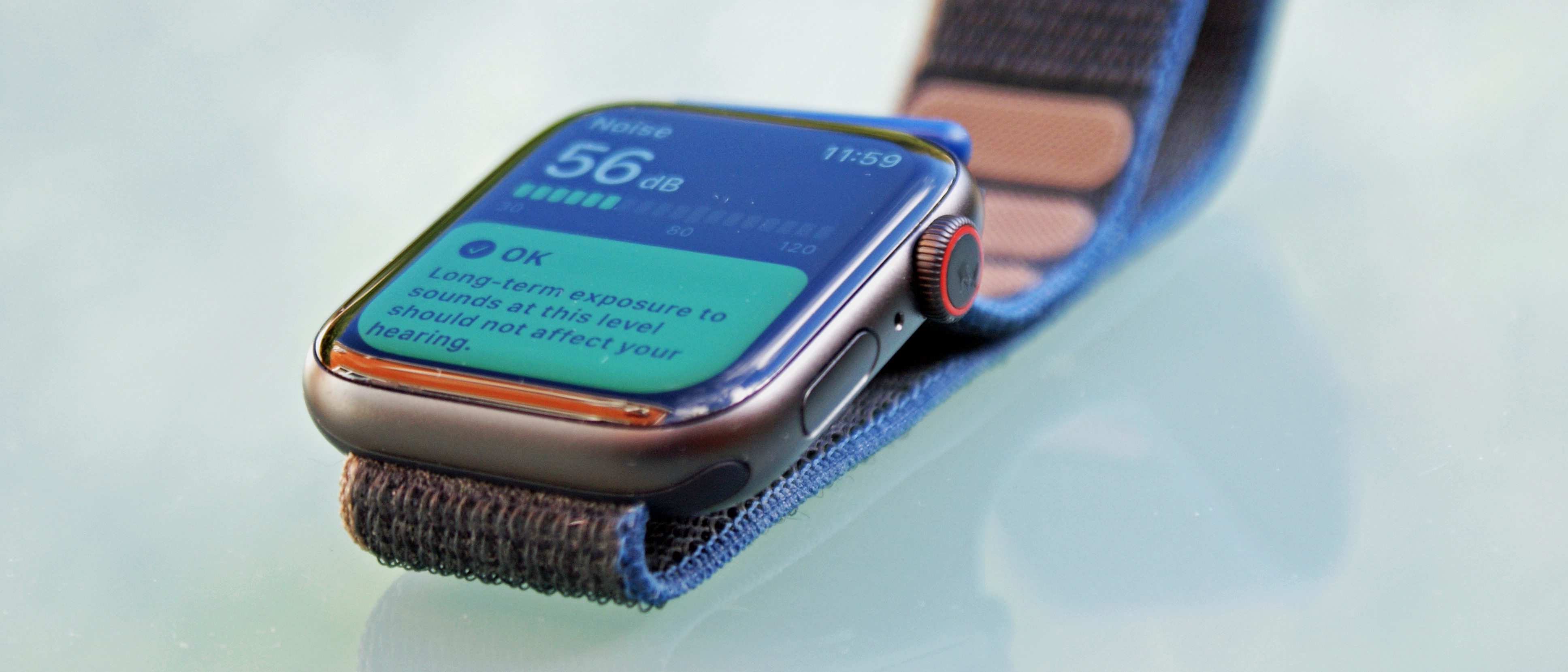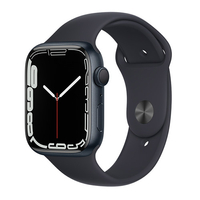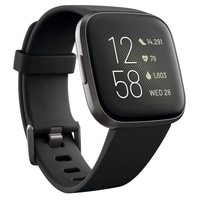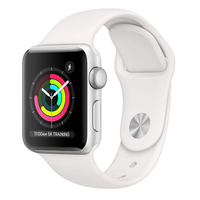TechRadar Verdict
If you know you want a new Apple Watch, the Watch SE is the one to go for: it’s got all the useful features of the Watch 6, but it’s much cheaper, and thus one of the best smartwatches around. The always-on display is sorely missing, but the fitness tracking – including motivating nudges to keep you active – is as good as ever, and will improve when Fitness Plus lands. However, the Watch SE comes with the same issues as the rest of the Apple Watch line: some features and apps are too lightweight, and the battery life is just too short to get the best out of the watch.
Pros
- +
Premium design
- +
Excellent phone companion
- +
Great range of features
Cons
- -
Lacks always-on display
- -
Battery life lacking
Why you can trust TechRadar
Two-minute review
Before you dive into this Apple Watch SE review, think about one thing: what do you actually want from a smartwatch?
Because if it's just 'an Apple Watch', then the Apple Watch SE is an underrated hit in the making, the high-value smartwatch with all the best watchOS perks at a great price. Heck, for some it may well be the best smartwatch around.
However, it doesn’t manage to address the flaws that remain in Apple’s smartwatch line, despite some notable advantages and a starting price of just $279 / £269 / AU$429. It offers the best of what you'd expect without offering anything new, so you'll be waiting on the fabled Apple Watch SE 2 for any big changes – though without a possible release date, the Apple Watch SE is still a sure bet.
The design of the Apple Watch SE is as familiar as you can get – the same curved edges, rounded aluminum chassis and Digital Crown on the side. If you’ve had an Apple Watch before, or just admired the devices and aspired to owning one, there’s nothing new here.
Along with the Apple Watch 6 it’s also a ‘larger’ Apple Watch, coming with a wider display and offered in 40mm and 44mm sizes, compared to the still-on-sale-from-2017 Apple Watch 3, which is 38mm and 42mm, and packs a smaller screen. The latter is the Apple Watch SE's real competition, and we'll see if more attractive perks are revealed in the upcoming Apple Watch 7.
The display is also familiar, in terms of sharpness and resolution. Thanks to OLED technology it’s clear, bright and easy to read in any situation – this is Apple at its best.
However, some may be turned off by the lack of an always-on display – Apple has dropped it here to keep the price down, so as on older Watches you’ll need to raise your wrist to see the time, how your workout is going, follow a map you’re using… basically anything.
While that’s helpful in making it cheaper and saving battery, it’s not ideal for a watch.
Where the Apple Watch excels is that it’s probably the best extension of a phone onto a wrist of any smartwatch out there. Alarms sync across flawlessly. Your data is shared between apps instantly. The integration into Apple’s ecosystem is immense.
But while many of the Watch SE features are smaller versions of those on the iPhone, when it comes to fitness the Apple Watch steps up well. The list of exercises that can be tracked in the default Workout app is growing all the time, and third-party apps like Strava work well – if a little simplistically – on the Watch too.
Add in an Apple Music subscription and a pair of AirPods, and you can head out of the house without your phone and go running with a wealth of music – these seamless experiences are what will entice Apple Watch users, and while this can be done on any of the Apple Watch range, the combination of the SE’s larger screen on which to track your workout and the lower-than-Watch-6 price make the Watch SE a compelling fitness companion.
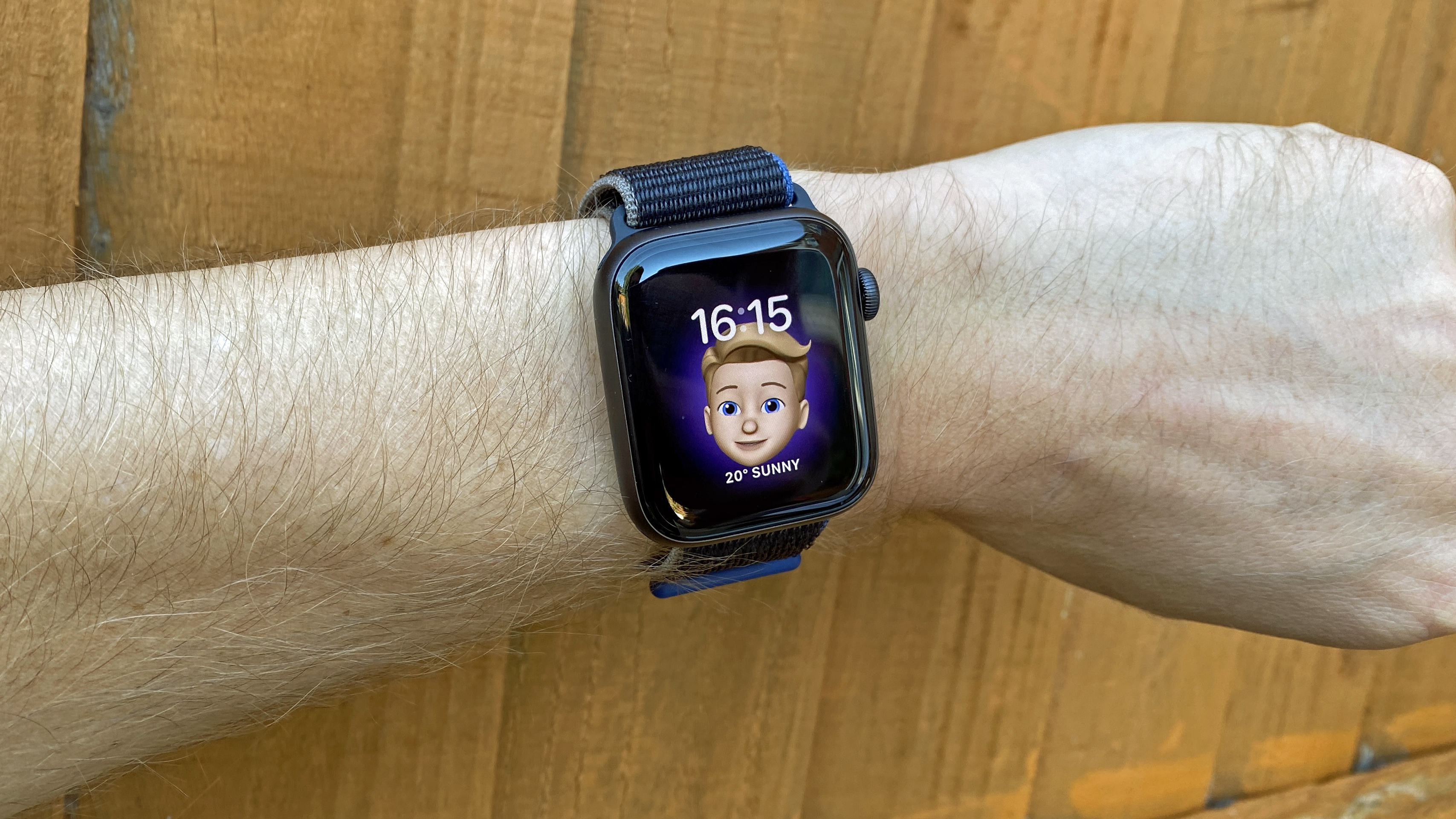
However, when it comes to battery life Apple still has some hard yards to make up. Having a smartwatch that only lasts a day and a half isn’t good enough in 2020, especially now that Apple has deployed sleep tracking on the Watch SE.
When are you supposed to charge this thing? There’s no point in the day where charging is a natural option, as charging overnight is, so you end up just doing little top ups here and there, or just forgetting to pick the Watch back up again and not having it on the wrist for hours on end.
While the battery life is good in terms of the Apple Watch range (and thanks to the lack of an always-on display and an efficient chip at the heart, the best we’ve seen from Apple) compared to the rest of the market, it’s sorely lacking.
If sleep tracking wasn’t so basic, this would present you with more of a conundrum – you’d have to decide whether to change your charging routine in order to take advantage of the feature, or just not use it very much. But all sleep tracking will do is tell you when you’ve been asleep, and several longer-lasting and cheaper smartwatches on the market can give you much more data.
If you’re after a cutting-edge Apple Watch, but don’t want to spend a huge amount of money, the Watch SE dispenses with ‘luxury’ features and just offers the things you need. It’s somewhere between the Apple Watch 4 and Apple Watch 5 in terms of power and features, and if you can get the older Watch 4 on a deal, it’s probably worth checking out.
But if you want a new Apple Watch, we absolutely recommend this model – as long as you can live without the always-on display.
Apple Watch SE price and release date
The price of the Apple Watch SE will depend on whether you opt for the GPS-only version or the cellular edition, and whether you prefer the simple Solo Loop / Sport band, or the more elegant Braided Solo Loop.
We were sent samples of the Solo Loop, but unfortunately they were a little too large for our wrists. However, there was something much more pleasing about just slipping them on, rather than having to fiddle with a buckle instead.
The Apple Watch SE is available now from the Apple Store or online, having gone on sale September 18, 2020, in key territories worldwide.
| Region | 40mm GPS | 40mm GPS+LTE | 44mm GPS | 44mm GPS+LTE |
|---|---|---|---|---|
| US | $279 | $329 | $309 | $359 |
| UK | £269 | £319 | £299 | £349 |
| Australia | AU$429 | AU$499 | AU$479 | AU$549 |
| Region | 40mm GPS | 40mm GPS+LTE | 44mm GPS | 44mm GPS+LTE |
|---|---|---|---|---|
| US | $329 | $379 | $359 | $409 |
| UK | £319 | £369 | £349 | £399 |
| Australia | AU$499 | AU$569 | AU$549 | AU$619 |
A basic 'upgrade'
The first question you might be asking is: what does the Apple Watch SE actually replace? It doesn't have the always-on display of the Watch 5, but it has more power than the Watch 4, so if those two devices were still on sale we might well be calling it the Apple Watch 4.5.
With that in mind, what upgrades, if you can call them that, does the SE bring over the Watch 4 (which as mentioned is no longer on sale)?
The main change is to the chipset inside – we found that the battery life of the Apple Watch 5 improved markedly when the always-on display was turned off, and given that’s not an issue with the Watch SE, we’re expecting good battery life from this device – and that’s what we’re seeing in the first couple of days of having it strapped it to our wrist.
There are still reams of useful features on the Apple Watch SE that those upgrading from the Apple Watch 3 would enjoy, and a lot of them are great for health tracking too – which is fast becoming the primary reason to buy this Watch.
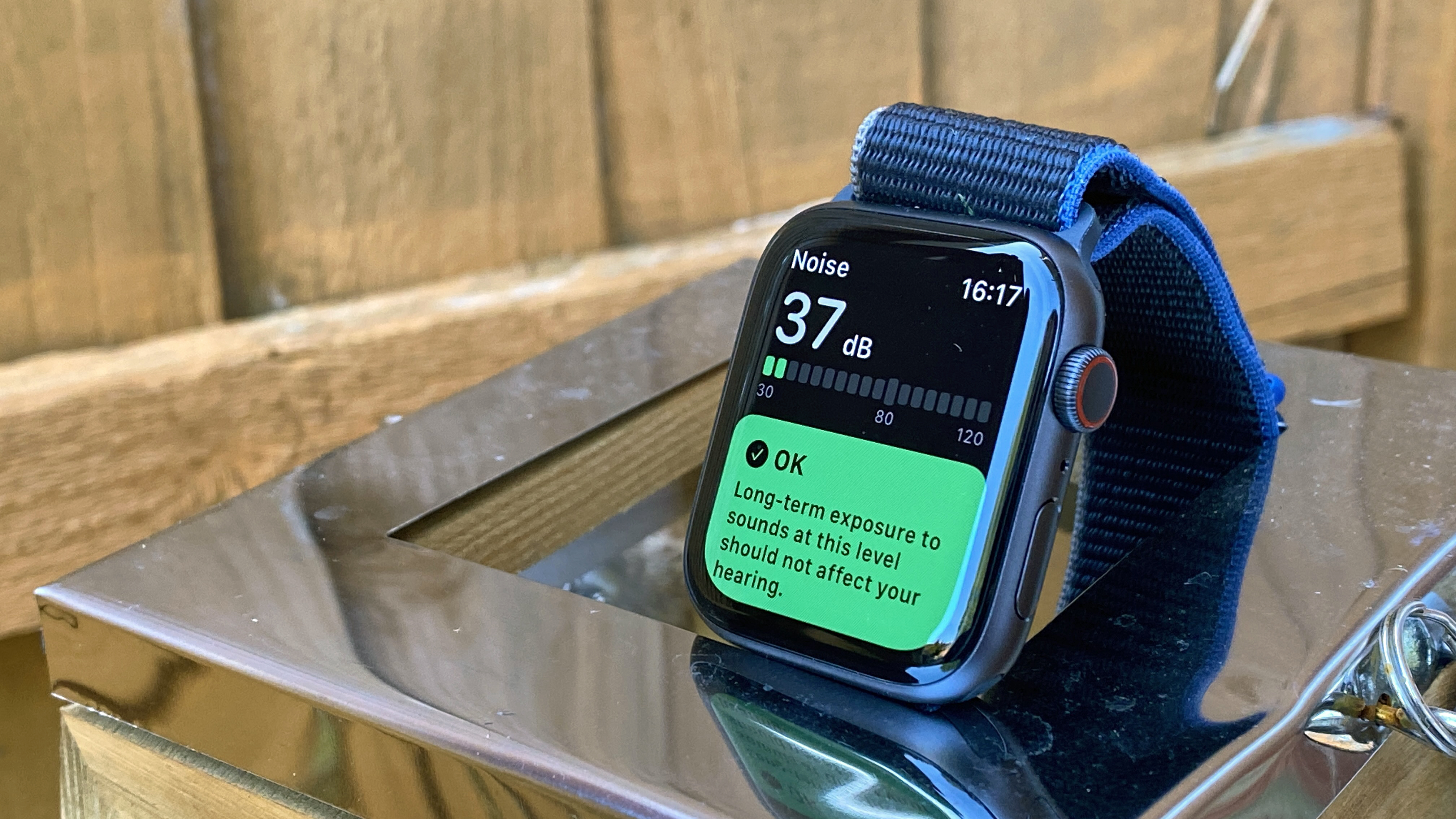
The decibel meter on board the Watch SE does a good job of alerting you when the sound around you is too high. The sleep tracking – which admittedly is available on any Watch capable of running the new WatchOS 7 these days – is useful, even if it’s not as fully-featured as dedicated sleep monitors, with things like time spent in deep, restorative sleep not specified.
The constantly-running altimeter is useful to let you know the true reflection of your elevation on a run – to the nearest foot according to Apple, although in side-by-side tests with the Apple Watch 6 on a workout we found that the height climbed and descended varied by 10-15 meters on a two-mile run.
Not massive, but we wouldn’t use the Watch SE to calculate our exact elevation stats on any workout.
At the other end of the fitness scale, the Apple Watch SE does feel like a great option for an elderly relative whose health you might want to keep an eye on – being able to get fall detection alerts, or warnings of issues with heart rate, will really bring peace of mind to those worried.
Combine that with the larger display on both the 40mm / 44mm size, courtesy of less bezel, and this is going to be a genuinely helpful device for the elderly.
With the new Family Setup feature for the Watch range, which enables you to set up an Apple wearable for someone else from your iPhone, buying the Watch SE for someone who doesn’t use an iPhone becomes a relatively straightforward proposition.
Apple Watch SE design

The design of the Apple Watch SE isn't going to surprise anyone – the cheaper Watch isn't any different from any other Apple Watch that's been launched since the Apple Watch 4 in 2018.
The same curved outline, which folds elegantly into the OLED display (more on that in a moment) is present and correct, packing the Digital Crown that rolls pleasantly under the finger when you're using it to scroll through a list on the Watch face.
Below that resides the power / multitasking button, which you can use to flip through recently-opened apps to get back to the one you were just using.
Despite this being a cheaper Apple Watch, there's no hint of cutting back in the design process.
On the underside of the Watch SE you'll find the heart rate monitor, with the glowing green LEDs that check your pulse throughout the day, which bulge slightly outward but can't be felt on the wrist in normal use.
2020 sees the launch of an all-new style of band, the Solo Loop, which looks like a really neat addition. It’s a silicone (or braided silicon) loop that stretches over your hand, so you don't need to constantly buckle and unbuckle your Watch SE to put it on and take it off.
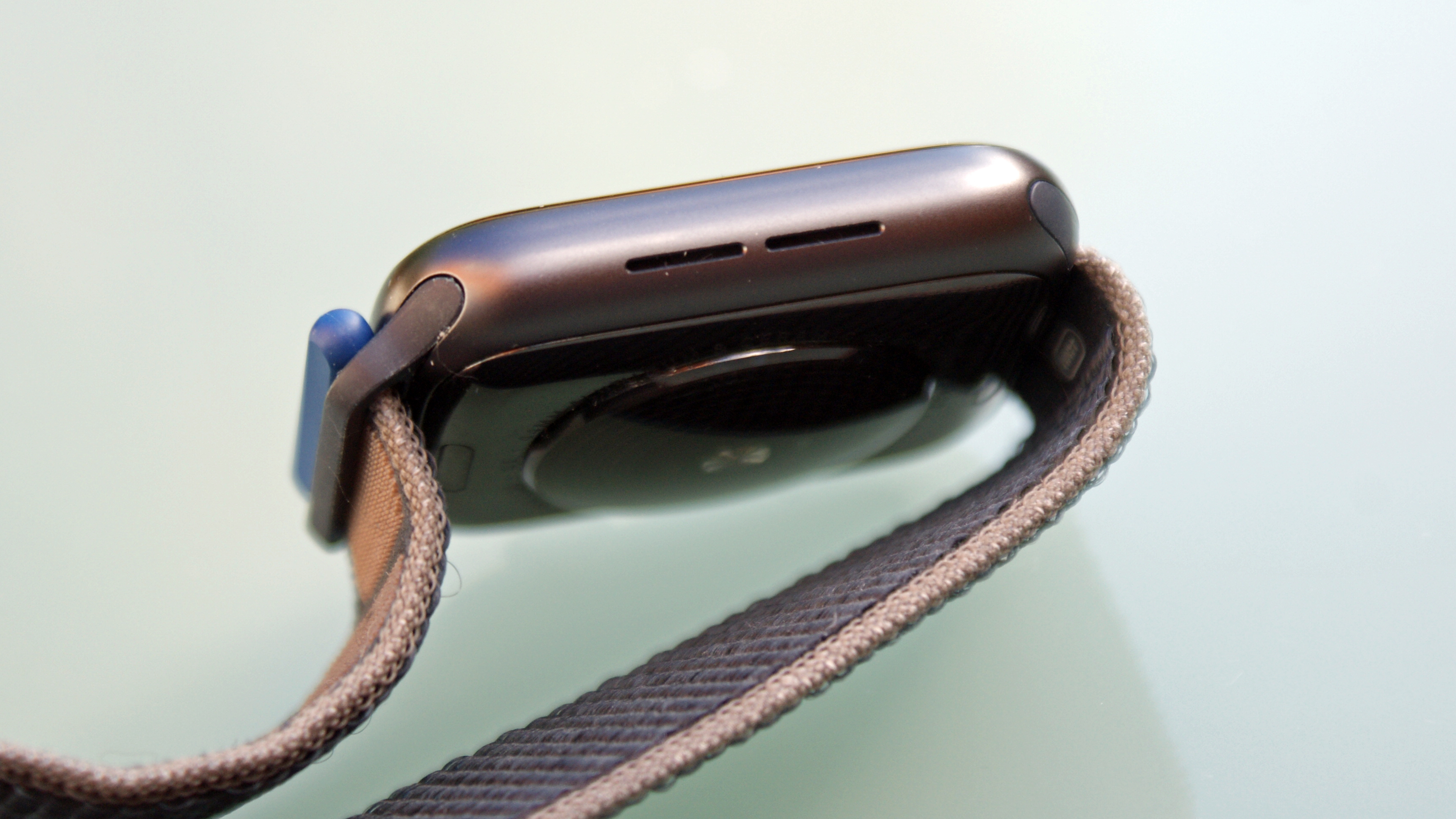
But you’ll need to make sure you get the right size for your wrist – Apple optimistically sent us the largest and third-largest sizes available, which turned our Apple Watch SE into a bangle.
Usually, you'd go into an Apple Store and get fitted for one, but in today's Covid world people are likely to be less willing to do that; the alternative is to print out a paper sizing guide, and that just seems like a lot of stress.
Luckily there are plenty of other bands to choose from, so you'll always find something to suit, although they are pricey, and it's not always simple to get them on and off – we wish Apple would come up with a design that enables you to change straps more easily.
Unlike with the Apple Watch 6, there are no fancy new colors options for the Apple Watch SE – Cook's Crew is clearly keeping the red coloring for the flagship Watch to entice buyers to spend a little more if they want the (in our opinion) best-looking option on their wrist. That means you're stuck with gold, silver or space gray if you want the Watch SE.
Apple Watch SE display

The Apple Watch SE display uses the same OLED display technology you’ll see on the Watch range stretching right back to the first model. As we mentioned above, it’s larger than the Apple Watch 3, thanks to coming in 40mm and 44mm sizes, and that’s a really key reason why you’d plump for the Watch SE over the Watch 3.
For those who loved the idea of the always-on display of the Watch 5 or Watch 6, that’s the big thing that’s missing on the Watch SE. What’s interesting is that the SE uses the same low temperature polycrystalline oxide (LTPO) technology as those Apple Watches with the always-on display, but disappointingly, it doesn’t seem like Apple will enable this technology in the future:
LTPO displays allow for variable refresh rates, thus enabling the Apple Watch’s always-on display. If the Series 5/6 have LTPO and get always on, why doesn’t the SE with LTPO get always-on, too? Could this, one day, be enabled through software? pic.twitter.com/5IZ8KvxGHnSeptember 18, 2020
However, we’re coming around to the idea that you don’t really need the always-on display, especially until Apple can get its act together and bring out a Watch that lasts three to four days on a single charge.
Until that point, we’re okay with flicking our wrist to see the time or check a notification – it doesn’t feel like that much of an imposition. Also, we’re still waiting for developers to be allowed to add always-on functionality to their apps, as right now the display just shows a floating clock when the Watch 5 or Watch 6 goes to sleep.
In short, we prefer the battery life and cost savings that come with not having the always-on display on the Watch SE. The outdoor brightness is comparable to that of the Watch 6, so there’s no issue with trying to see the time when you’re blinded by the rays of Helios, and it doesn’t glow like a beacon at night, or when you’re in a gloomy place and have forgotten to enable Theater Mode.
Apple Watch SE fitness
The fitness capabilities of the Apple Watch SE are likely the key reason you'll be buying this device. Apple has been hard at work turning its wearables into serious fitness and wellness devices since the first Watch was first unveiled in 2015, and it's doing a better job with each iteration.
Given that the Watch SE is broadly comparable to last year's Apple Watch 5, other than missing out on the always-on display, you know you're getting a strong health and fitness device for less money than 2019's model cost.
The key features here are GPS and Glonass (another satellite the Watch SE can track to help improve location accuracy), 5 ATM water resistance, which means you can go swimming with this device down to 50 meters, and now on-board sleep tracking.
With the launch of watchOS 7 you're also getting more ways to track your fitness in the Workouts app, with Dance and Cooldown added to running, walking, cycling, yoga and more – having these new options means your calorie burn is going to be more accurate, and you'll know when you've hit your fitness rings.
Those rings are the key to how the Apple Watch SE can help you live a healthier, fitter life. Many will be familiar with the concept by now, but if you’re not, these are colored, animated rings that fill up depending on how much you're exercising each day, how much movement you're managing, and if you're standing up from your desk often enough.
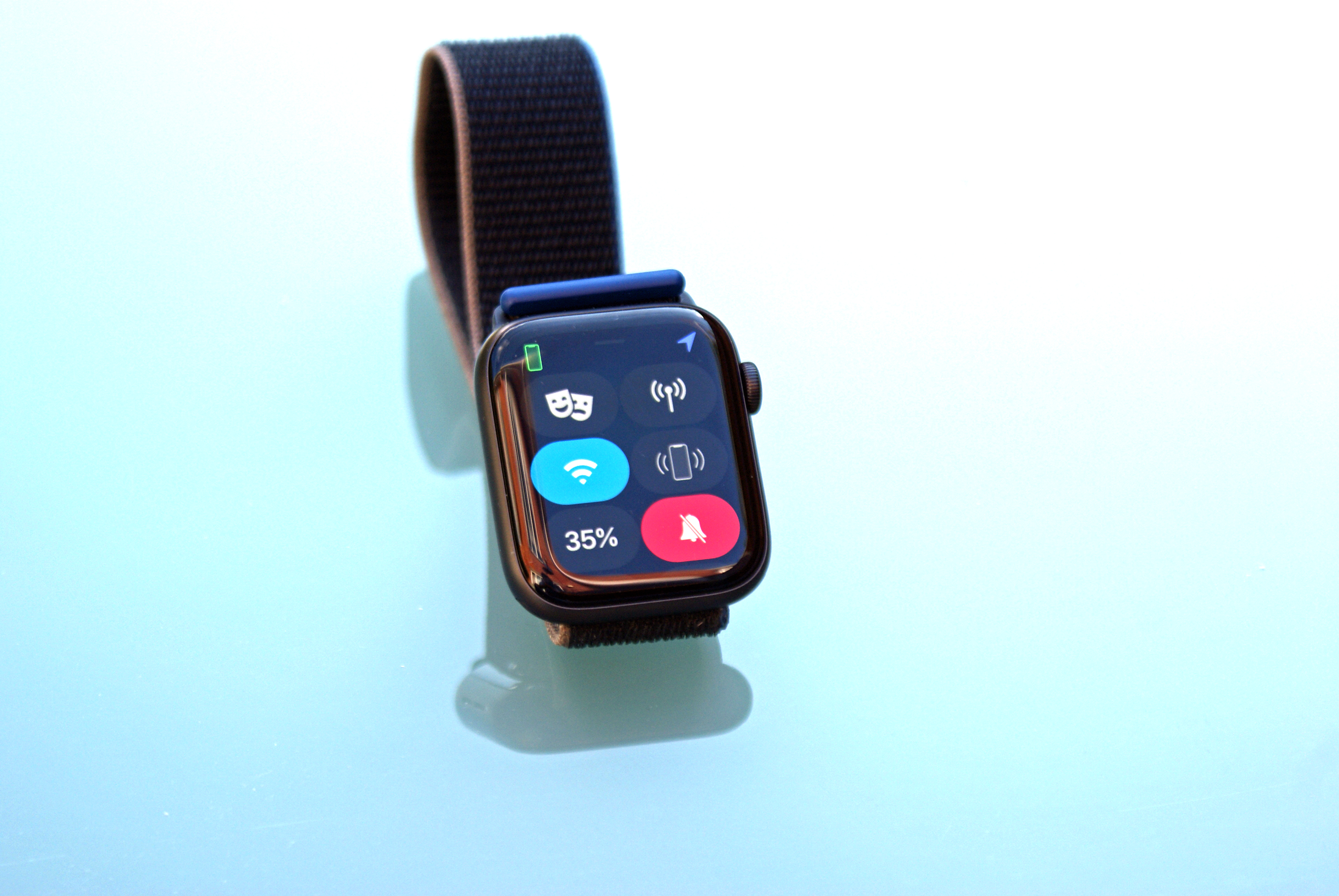
It sounds simple, but the Watch can learn your general movement patterns, and towards the end of the day you'll get a notification telling you what the Watch SE thinks you need to do in order to hit your movement goals. These suggestions aren’t always the smartest – being told to go for a walk at 11pm isn’t particularly helpful – but they can encourage you to be more active at key times.
It’s certainly not perfect – we’ve hit our ‘move’ goal when driving, and while writing this review we were notified that we’d hit our ‘stand’ goal… while sitting. But overall, it helps nudge you in the right direction.
In terms of the more granular fitness elements on the Apple Watch SE, however, it’s clearly not designed for those who want to step their fitness up a level. Running is still more about convenience than improvement – there’s no GPS lock at the start of the run, for instance, which means that sometimes you’ll get a slightly inaccurate reading.
We compared the Watch SE regularly to a high-end Garmin Forerunner 945, and found that, by and large, the results were the same – and there were especially impressive moments where the Watch SE proved capable of detecting that we’d started a run, asked if we’d like to log it, and returned results that were comparable to the Garmin’s to within 0.03 miles.
However, it’s more prone to error when coverage becomes spotty in forested and built-up areas, highlighting the fact that if you really want to make improving your running or cycling goals a focus, you might be better off with a more dedicated fitness device.
If, however, you just want something to help you try out new fitness regimes, track your calories-burned through an ever-widening range of supported workouts, or just give you the regular nudges and data you might want in order to help you get healthier, then the Watch SE is a fantastic option.
One of the key benefits of the Watch SE is going to be the addition of the new Fitness Plus service from Apple, to which you can subscribe to get access to dozens of videos to help you achieve your fitness goals.
Your heart rate and other data from your Watch will be displayed on whichever phone or TV screen you’re using, be it iPhone, iPad or Apple TV, and will alter dynamically depending on what the pre-recorded coach is asking you to do. It’s not cheap at $9.99 / £9.99 / AU$14.99 per month or $79.99 / £79.99 / AU$119.99 for a year, but new Watch buyers will get a three-month subscription with their purchase, while current Apple Watch owners can try out the service free for a month.
It’s a strong proposition, and one that’s far more suited to the Watch SE than the Watch 6, thanks to the lower cost of the former device – your fitness data is sent to your workout no matter which Watch you’re wearing (that’s a fun phrase to say) so you can spend less on the Watch SE and get the same workout effect.
Apple Watch SE watchOS 7

If you want to get our full rundown of what’s new with the latest Apple Watch operating system, check out our Apple Watch 6 review – we found the experience with the new features was identical in every way on the Watch 6 and the SE.
One of the key benefits of the Apple Watch is the onboard music – if you’ve got an Apple Music subscription then you can save offline music (or stream it over LTE if you’ve got that version of the Watch).
And, finally, Spotify is being upgraded to let you stream music without having to be connected to an iPhone (as long as you have the LTE version of the Watch SE), although there’s still no offline support to let you download music from Spotify – it’s frustrating, but perhaps that will be coming soon.
But for those who just want to know the highlights, or how certain features performed on the Watch SE, here are the key things we enjoyed (or didn’t enjoy) using.
Sleep tracking
Being able to track sleep on the Apple Watch SE is a nice feature to have – yes, it’s coming to most Watches in the range with the upgrade to watchOS 7, but the longer-lasting battery on the SE is helpful here.
We were easily able to get through to the morning to capture the sleep tracking, but, as we’ve discussed, the battery life isn’t useful enough to not be annoying. What you want is a watch that can last for multiple days’ worth of sleep tracking, and then only need an hour’s top-up once in a while, when you’re at a desk.
The results are a little dull too – no ideas on whether you’ve slept well or not, just an update on how long you slept based on the accelerometer. There are better apps out there for more in-depth sleep tracking than Apple offers, and we expected a little more from the brand’s first foray into monitoring your slumber.
Hand washing
Apple claims this feature wasn’t added in response to the Covid pandemic, but it’s mighty coincidental that it’s appeared as the pandemic is gripping the globe.
Initially, we felt like this was a redundant feature, taking too much time to activate and not giving us credit for washing our hands when we actually were.
However, we began to learn to wash harder to make sure the effort was registered, and we soon found that we became better at washing for the right length of time, and with the right amount of force. Ordinarily it would be annoying that we needed to work this hard to make use of a Watch feature, but this actually felt worth it.
Siri
You can activate Siri simply by raising your watch to your lips, and for the most part it worked pretty well. There were a few occasions when it wouldn’t fire, or couldn’t connect to the internet, but that’s Siri in a nutshell: great when it works, but often erratic in its performance.
There were also accidental triggerings when the Watch thought we had said the ‘Hey Siri’ command, which were irritating. Then we get into the idea of controlling your smart home from your wrist - you can either press a button on the screen or, more conveniently, ask Siri to perform smart home actions for you. But, as ever with Apple’s smart home control, there were times when the Watch couldn’t turn lights on and off with a brief tap on the screen or fully complete the action with Siri - the expensive Watch not being able to act as a light switch as instructed is frustrating.
Apple Watch SE battery life
The Apple Watch SE battery life is easy to review: it’s longer than you’d expect if you listened to Apple. The brand says you’ll get around 18 hours, or ‘all-day’ battery life, but the reality is that you’ll get much more than that.
Thanks to the Watch SE display being turned off most of the time, we enjoyed 24-36 hours of use from a full charge during our testing – and that was with running nearly every day, so firing up the GPS for anything from 45 minutes to two hours.
Despite packing the older S5 chipset inside, we found that the Watch SE still had excellent battery life compared to the other Apple Watch models – better than the Watch 5 at launch thanks to the display, again, as well as efficiency improvements in the operating system.
The SE also lacks the advanced heart rate and blood oxygen monitoring of the Watch 6, which can be heavy drains on the battery.
The Watch 6 performs better during GPS-tracked workouts, as well as when listening to on-device music, thanks to the more efficient S6 chipset inside, but in day-to-day use the Watch SE was absolutely fine in most situations.
We say ‘most’, because there is still an issue with the new sleep tracking function in watchOS 7 (more on that in a moment).
As we’ve mentioned, 24 hours is a tricky battery life number if you want to track sleep. Charging the Watch SE to 100% from empty should take around two and a half hours (although we timed it at closer to two) – that’s a tough time slot to find in the day if you don’t want to charge the SE overnight.
What that means is that you’ll end up ‘spot-charging’ here and there to keep your Watch topped up – and unless you have a routine that makes it easy for you to do that at the same time each day, you’ll quickly end up needing to charge it overnight every few days, and losing that sleep data.
Should you buy the Apple Watch SE?
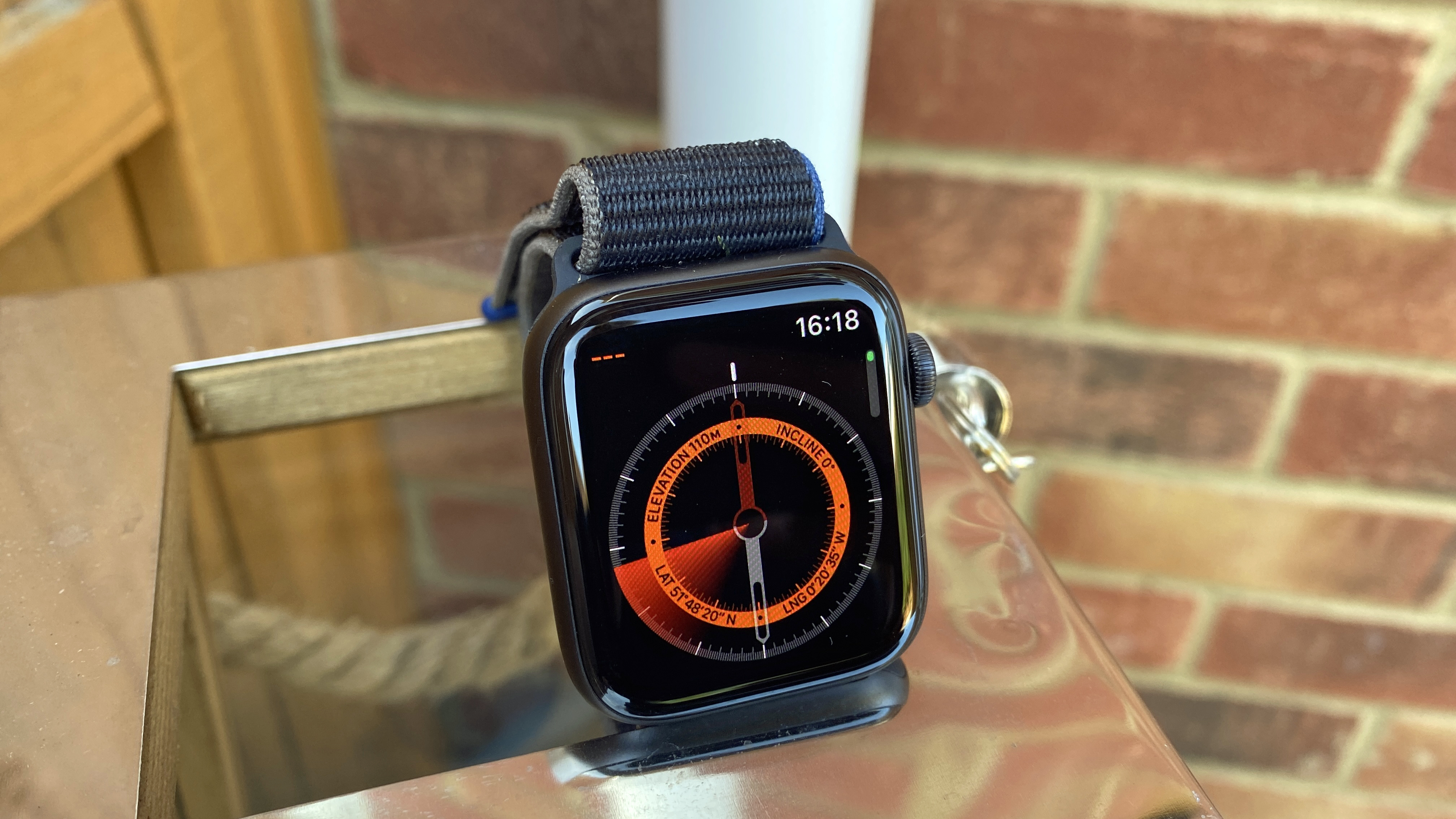
Buy it if…
You want an Apple Watch for less money.
The Watch SE has a lower price, but you still get a lot of the high-end features of the Watch 6 – it largely depends on how much you want an always-on display.
You don’t care about blood oxygen.
The ability to check how well your respiratory system is working is a key feature of the Watch 6, but it’s more of a peace-of-mind feature, rather than a must-have, and many people will be able to live without it.
You want good battery life
While the Apple Watch is far from market-leading here, the battery life on offer with the Watch SE is the best we’ve seen, thanks to a more modern chipset and the omission of the always-on display.
Don’t buy it if…
You want the latest and best
The Watch SE is effectively a hybrid of the Watch 4 and Watch 5, which effectively makes it 1.5 generations old. If you love having every cutting-edge feature, this isn’t for you.
You want the cheapest Apple Watch
That’s the Apple Watch 3, and it’s still on sale. It also lacks the always-on display, but it also has a smaller display, although many of the most useful Watch Features are present.
You love a cheeky glance
While the always-on display is battery-hogging, it does make it easier to quickly see the time – and that’s a good thing on a watch, we think.
Also consider
So you've read our Apple Watch SE review, but if you're still not sure what to buy, here are some alternatives.
Apple Watch 7
If you don't need to pinch pennies when buying a new Apple Watch, then this version will get you plenty more features over the SE.
Check out our Apple Watch 7 review
Fitbit Versa 2
If you don't want to be stuck on Apple's ecosystem, the Versa 2 is comparable in terms of price and has more advanced sleep tracking.
Check out our Fitbit Versa 2 review
Apple Watch 3
The Apple Watch 3 is a more affordable smartwatch that Apple keeps around as its cheapest offering, with even fewer features than the SE.
Check out our Apple Watch 3 review
First reviewed: November 2020

Gareth has been part of the consumer technology world in a career spanning three decades. He started life as a staff writer on the fledgling TechRadar, and has grew with the site (primarily as phones, tablets and wearables editor) until becoming Global Editor in Chief in 2018. Gareth has written over 4,000 articles for TechRadar, has contributed expert insight to a number of other publications, chaired panels on zeitgeist technologies, presented at the Gadget Show Live as well as representing the brand on TV and radio for multiple channels including Sky, BBC, ITV and Al-Jazeera. Passionate about fitness, he can bore anyone rigid about stress management, sleep tracking, heart rate variance as well as bemoaning something about the latest iPhone, Galaxy or OLED TV.
